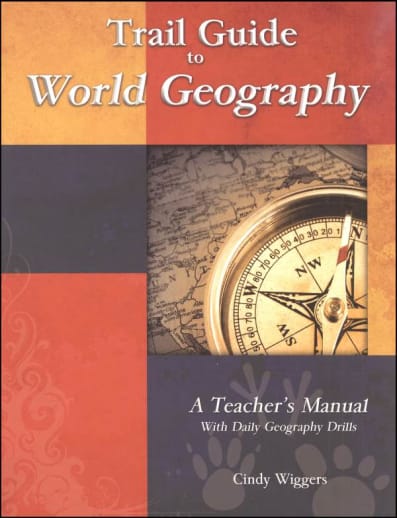This book literally blazes a trail through geography - all you have to do is follow it! Cindy Wiggers has done a terrific job of combining questions, mapping, and other activities into a fun, easy-to-teach approach to geography. Intended as a thirty-six week program, the first twenty-seven of these include a variety of activities. The first weeks encompass the world as a whole; then you focus on different regions continent by continent. Within each week there are several different methods of learning. One of these, Geography Trails, provides questions four days a week that will improve the student's ability to use maps to locate countries, capitals, bodies of water, and landforms, teach them valuable geography terms and learn many geography facts. Different questions are given for grades 2-4, 5-7, and 8-10, so that you can use this book for children at different levels at the same time. The questions are based on the content of three recommended atlases (one for each age group) which are listed in the key resources below. Additional geography activities for every week are in the form of "Points of Interest," where you can take time to learn more extensively. Activities to choose from include mapping, researching, suggestions for art projects, and weekly projects to compile into your very own geography notebook. Then it's Geography through Literature for the last nine weeks as you read through Around the World in 80 Days. Questions for each chapter are provided, as are ideas for additional research and spelling and vocabulary words. Happy trails!
Please note that that this course provides a framework for studying world geography, and relies on additional resources for reference, maps, and activities. Required resources include: Around the World in 80 Days by Jules Verne (if you are planning on completing the literature portion of the study) and one or more of the recommended atlases (depending on the age of the student(s). Three other "key" recommended resources you will rely heavily on for many of the activities include the Ultimate Geography and Timeline Guide, Uncle Josh's Map Book (in book form, or CD-ROM), and Visual Manna's Teaching Geography Through Art (for the art in geography lessons). Although you could make the study work without these, they are often referred to in the lessons, and the program would work much more easily with them. These and other recommended resources are listed below. An almanac is also recommended, in case you don't have one on hand, we recommend the World Alamanac & Book of Facts. A Geographical Terms chart is also recommended; we are unable to offer this specific one, but it is available from Geography Matters. ~ Stephanie

